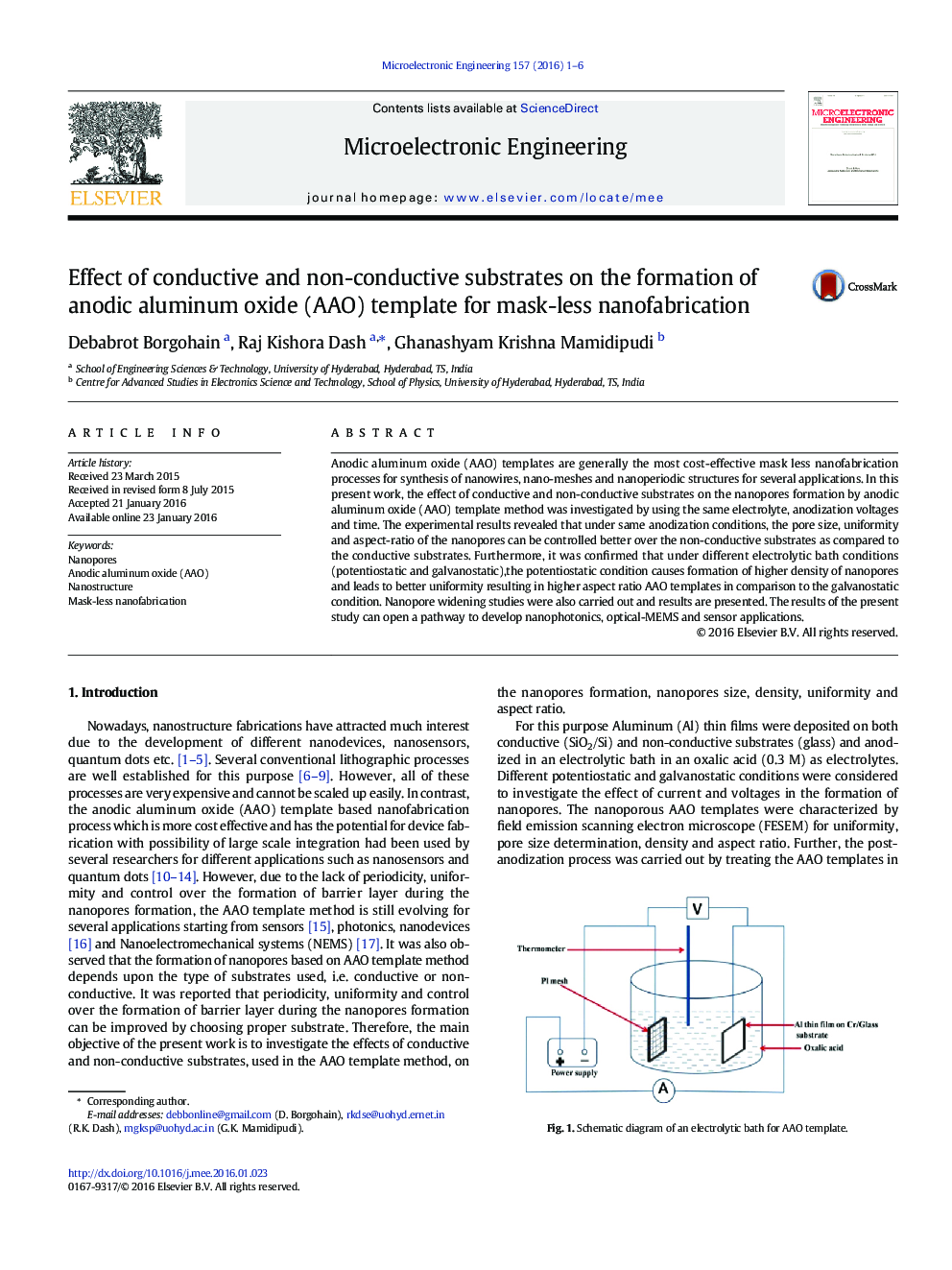| Article ID | Journal | Published Year | Pages | File Type |
|---|---|---|---|---|
| 542008 | Microelectronic Engineering | 2016 | 6 Pages |
•Studied the effects of conductive and non-conductive substrates on AAO template•Improved nanopores formation on non-conductive substrates•Studied the effects of potentiostatic and galvanostatic conditions on nanopores•Potentiostatic conditions are more suitable for better AAO templates.
Anodic aluminum oxide (AAO) templates are generally the most cost-effective mask less nanofabrication processes for synthesis of nanowires, nano-meshes and nanoperiodic structures for several applications. In this present work, the effect of conductive and non-conductive substrates on the nanopores formation by anodic aluminum oxide (AAO) template method was investigated by using the same electrolyte, anodization voltages and time. The experimental results revealed that under same anodization conditions, the pore size, uniformity and aspect-ratio of the nanopores can be controlled better over the non-conductive substrates as compared to the conductive substrates. Furthermore, it was confirmed that under different electrolytic bath conditions (potentiostatic and galvanostatic),the potentiostatic condition causes formation of higher density of nanopores and leads to better uniformity resulting in higher aspect ratio AAO templates in comparison to the galvanostatic condition. Nanopore widening studies were also carried out and results are presented. The results of the present study can open a pathway to develop nanophotonics, optical-MEMS and sensor applications.
Graphical abstractFigure optionsDownload full-size imageDownload as PowerPoint slide
